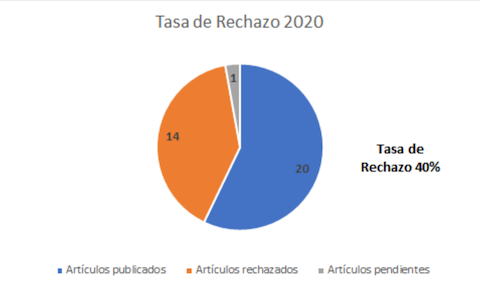Review of Different Geospatial Perspectives for the Identification and Mitigation of Potential Security Threats to Satellite Platforms
DOI:
https://doi.org/10.18667/cienciaypoderaereo.704Keywords:
Satellites, cybersecurity, geospatial technology, machine learning, earth observationAbstract
Satellite infrastructure plays a vital role in today's world. As more systems rely on this technology it increasingly becomes a target for security threats. The existence of such risks has been acknowledged internationally as more resources are allocated to their study and understanding. In this context, studying satellite technologies from a geospatial perspective has provided a situational awareness understanding of the technology ecosystem and its strengths, limitations, and vulnerabilities. New technologies such as artificial intelligence, machine learning, and blockchain must be studied to generate security countermeasures for satellite technologies.
Downloads
References
Chen, K. S. (2016). Principles of synthetic aperture radar imaging: A system simulation approach. CRC Press. https://doi.org/10.1201/b19057
Chuvieco, E. (1990). Fundamentos de teledetección espacial. Ediciones Rialp.
Copernicus.(2021).Copernicusservices.https://www.copernicus.eu/en
CubeSat. (2018, March 20). CubeSat. http://www.cubesat.org/
Fritz, J. (2013). Satellite hacking: A guide for the perplexed. Culture Mandala, 10(1), 5906.
Geospatial Media Communications. (2017). Global geospatial industry report. Geospatial Media Communications.
Hackasat. (2020). Home. https://www.hackasat.com
Humphreys, T. E., Ledvina, B. M., Psiaki, M. L., O'Hanlon, B. W., & Kintner, P. M. (2008). Assessing the spoofing threat: Development of a portable GPS civilian spoofer. Proceedings of the 21st International Technical Meeting of the Satellite Division of The Institute of Navigation. Institute of Navigation. http://www.ion.org/publications/abstract.cfm?jp=p&articleID=8132
Iacobellis, M., Amodio, A., & Drimaco, D. (2020). Cyber-security threats to space missions and countermeasures to ad- dress them. 71st International Astronautical Congress (IAC) - The CyberSpace Edition, IAC-20-E9.2.D5.4.
ISIS Space. (2020, September 13). ISIS CubeSat development platform. ISIS Space. https://www.isispace.nl/product/isiscubesat-development-platform/
Kleos Space. (2021). Delivering RF reconnaissance data-as-a- service. Kleos Space. https://kleos.space/
Korean Aerospace Research Institute [KARI]. (2021). Korea Multi-Purpose Satellite (KOMPSAT, Arirang). KARI. https://www.kari.re.kr/eng/sub03_02_01.do
Kothari, V., Liberis, E., & Lane, N. D. (2020). The final fron- tier: Deep learning in space. ArXiv:2001.10362. http://arxiv.org/abs/2001.10362
Malik, W. J. (2019, July 26). Attack vectors in orbit the need for IoT and satellite security [Conference session]. RSA Conference 2019, San Francisco, CA, USA. http://www.rsaconference.com/industry-topics/presentation/attack-vectors-in-orbit-the-need-for-iot-and-satel- lite-security
Manning, J., Langerman, D., Ramesh, B., Gretok, E., Wilson, C., George, A., MacKinnon, J., & Crum, G. (2018). Machine-learning space applications on smallsat platforms with TensorFlow. 32nd Annual AIAA/USU Conference on Small Satellites. https://digitalcommons.usu.edu/smallsat/2018/all2018/458
Planet. (2021). Homepage. https://www.planet.com/
Radio Amateur Satellite Corporation [AMSAT]. Home. (2020). AMSAT. https://www.amsat.org/
Richards, J. A. (2009). The imaging radar system. In J. A. Richards (Ed.), Remote Sensing with Imaging Radar (pp. 1-10). Springer. https://doi.org/10.1007/978-3-642-02020-9_1
Roundtable on Sustainable Palm Oil [RSPO]. (2021). Home. https://rspo.org/
SatNOGS. (2020, September). SatNOGS. https://satnogs.org/
The CubeSat Simulator Project Page. (2020). Home. http://www.cubesatsim.org/
Tullis, P. (2019, December 1). GPS is easy to hack, and the U.S. has no backup. Scientific American. https://www. scientificamerican.com/article/gps-is-easy-to-hack- and-the-u-s-has-no-backup/

Published
Issue
Section
License
Copyright (c) 2021 Escuela de Postgrados de la Fuerza Aérea Colombiana

This work is licensed under a Creative Commons Attribution 4.0 International License.
Assignment of Copyrights
Authors assign Ciencia y Poder Aéreo journal the exclusive rights (reproduction, distribution, public communication, and transformation) to exploit and commercialize their work, in whole or in part, in all the formats and modalities of present or future exploitation, in all languages, throughout the life of the work and throughout the world.
All contents published in Ciencia y Poder Aéreo journal are licensed under a Creative Commons Attribution 4.0 International License, whose complete information is available at http://creativecommons.org/licenses/by/4.0/
Under the terms of this license, users are free to download, print, extract, archive, distribute and publicly communicate the content of articles, provided that proper credit is granted to authors and Ciencia y Poder Aéreo, scientific journal of the Graduate School of the Colombian Air Force. Except when otherwise indicated, this site and its contents are licensed under a Creative Commons Attribution 4.0 International License.
For other uses not considered under this license it is required to contact the Director or the Editor of the journal at the e-mail address cienciaypoderaereo1@gmail.com.
The Graduate School of the Colombian Air Force and this publication are not responsible for the concepts expressed in the articles, including the metadata or the affiliation stated by authors. This is the full responsibility of the authors.





















